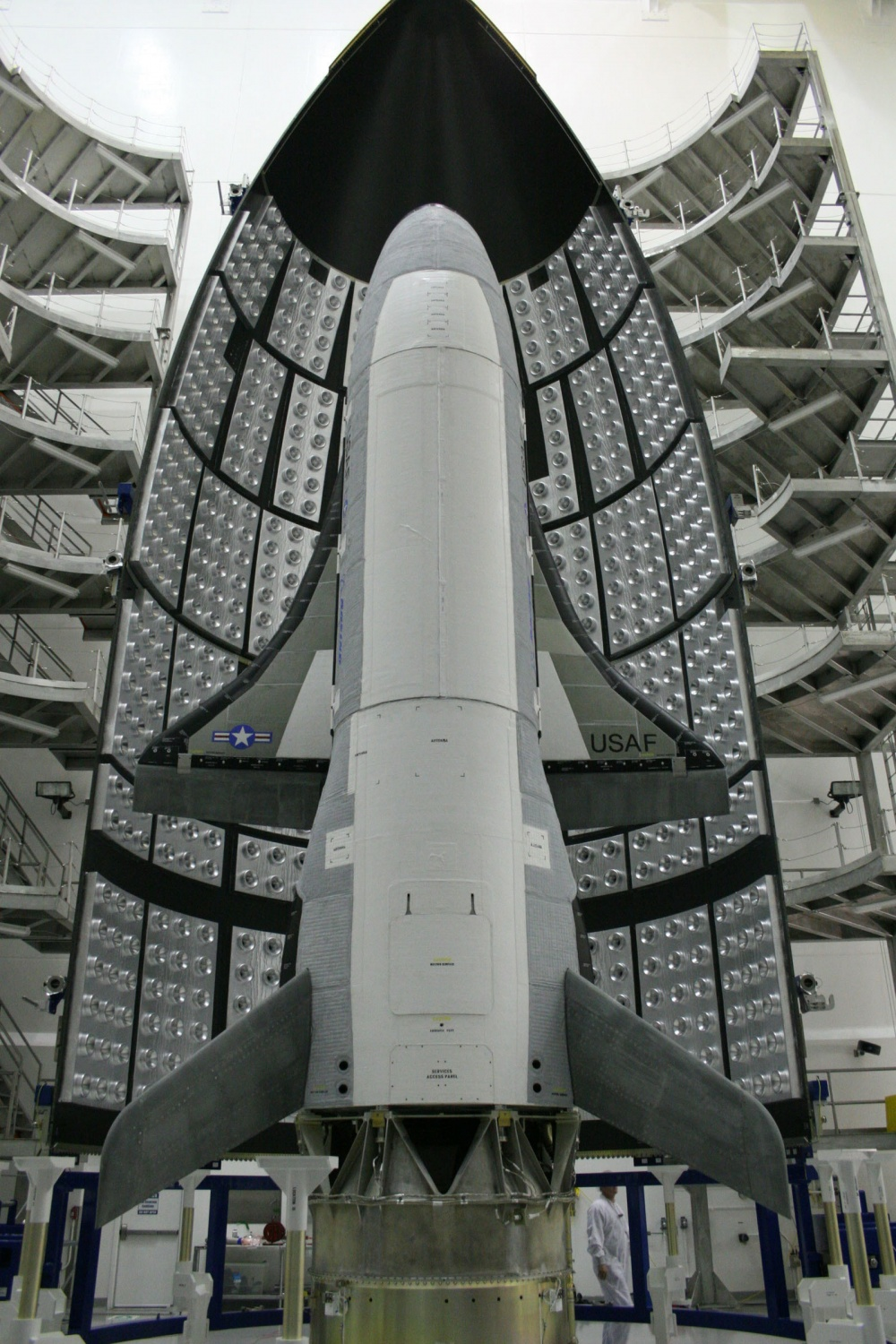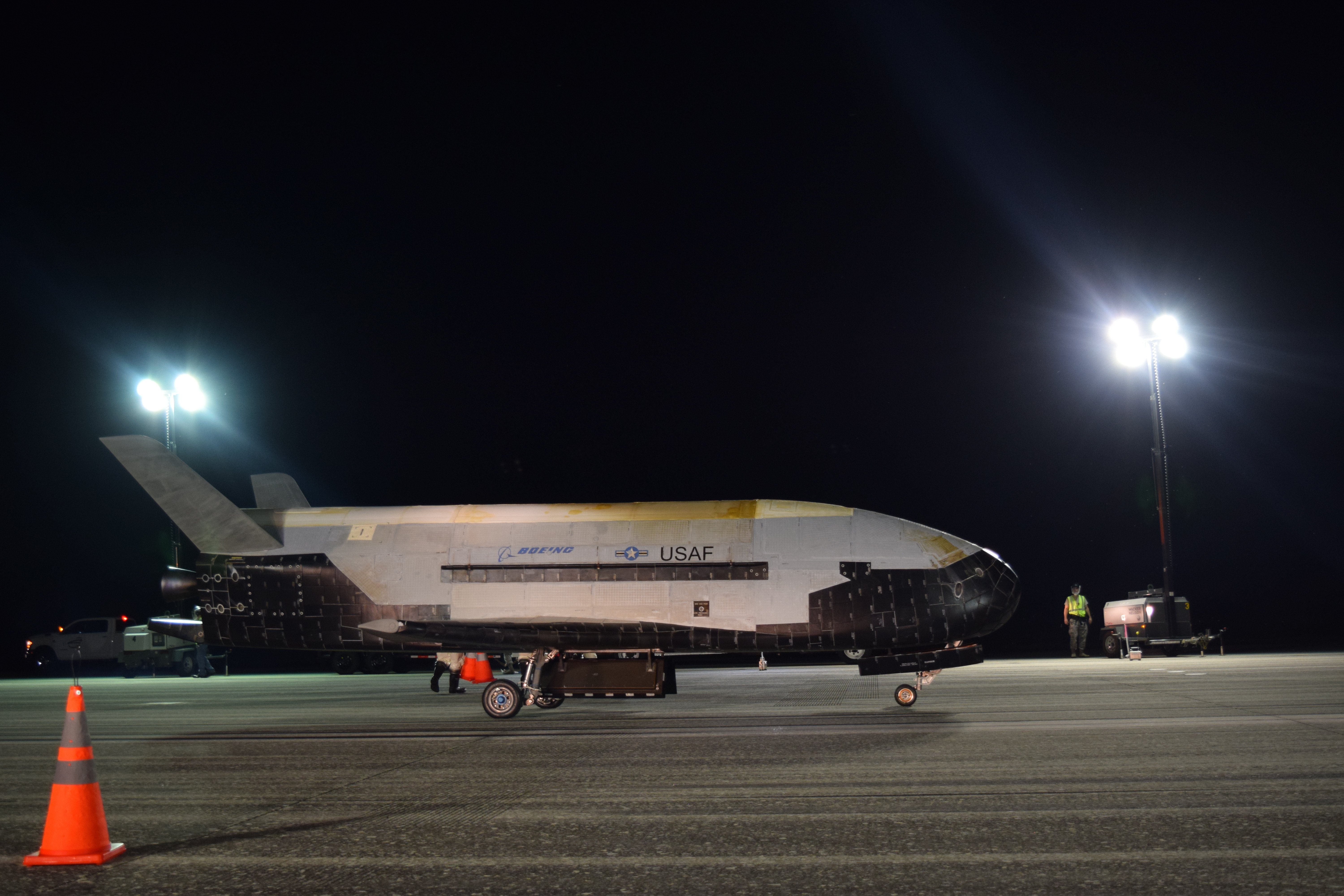The Air Force's Robotic Spaceplane Returns After Nearly 800 Days In Orbit
The U.S. Air Force's X-37B returned to Earth this week after more than two years in orbit. The unmanned space plane keeps breaking records, this time spending 780 days circling the planet before gliding to a stop at NASA's Kennedy Space Center in Florida. The spacecraft is a key part of the Pentagon's plans for space at a time when NATO is set to declare space a "domain of warfare."
OTV-5, or Orbital Test Vehicle Mission 5, launched from Cape Canaveral atop a SpaceX Falcon 9 rocket on July 9, 2017. The robotic shuttle landed at NASA's Kennedy Space Center Shuttle Landing Facility Oct. 27, 2019, at 3:51 a.m. OTV-5 beat the previous record for the X-37B, and pretty much any reusable spacecraft, by two days.
The Air Force is typically tight-lipped about what the X-37B, a spaceplane the size of a city bus, does "up there." That's encouraged a lot of wild speculation, from practicing the capture of enemy satellites (and bring them home to Florida) and deploying space-based weaponry.
Equipped with a cargo bay the size of a pickup truck bed and a robotic arm, the X-37B is a highly capable spacecraft. It's easy to imagine it doing James Bond-level stuff.
This summer, Space.com broke the news that one of OTV-5's missions was the test of Advanced Structurally Embedded Thermal Spreader experiment (ASETS-II), which "measures the performance of electronics and oscillating heat pipes in the space environment." If that sounds boring enough to make you lose interest, that might have been the point.
As it turns out, that wasn't the only thing OTV-5 was doing up there. Upon landing, the Air Force announced that the mission, "successfully hosted Air Force Research Laboratory experiments, among others, as well as providing a ride for small satellites." The service did not provide any details on the nature and capabilities of the small satellites.
Why keep it a secret? The Air Force likely didn't want to attract additional scrutiny to the mission, both from state and non-state actors (AKA a guy on the ground with a telescope). Amateur space-watchers have actually spotted the X-37B in orbit.
If the X-37B is observed releasing satellites, that might give observers a leg up on tracking and identifying them. Furthermore, the longer the X-37B stays up there, the longer an interested party must keep it under surveillance to catch it doing anything interesting. Right now, we have no idea when the satellites were released, where they were released, and what they are doing.
Well played, Air Force. Well played.

Meanwhile on Earth, the North Atlantic Treaty Organization (NATO) is preparing to declare space a "domain of warfare", similar to air, land, sea, and the Internet. This was an inevitable but still disheartening development that acknowledges that future big power conflicts—such as a war between the United States and China—will likely see space as a battleground. All of the major military powers, including the United States, Russia, China, France, and Japan are heavily dependent on satellites to relay communications, aid in navigation, and conduct space-based espionage. It is certain at this point all of the space powers will evolve capabilities to attack enemy satellites, defend their own spacecraft, and gain the ability to rapidly replace satellites.
X-37B missions last so long that norms regarding the use of space are changing while the spaceplanes are away. Could the Air Force's space plane evolve into something more menacing to satellites of potential adversaries? Maybe not the X-37B, but perhaps the X-38, or whatever comes next.
The dawn is breaking on the era of space warfare—and there's nothing we can do to stop it.
